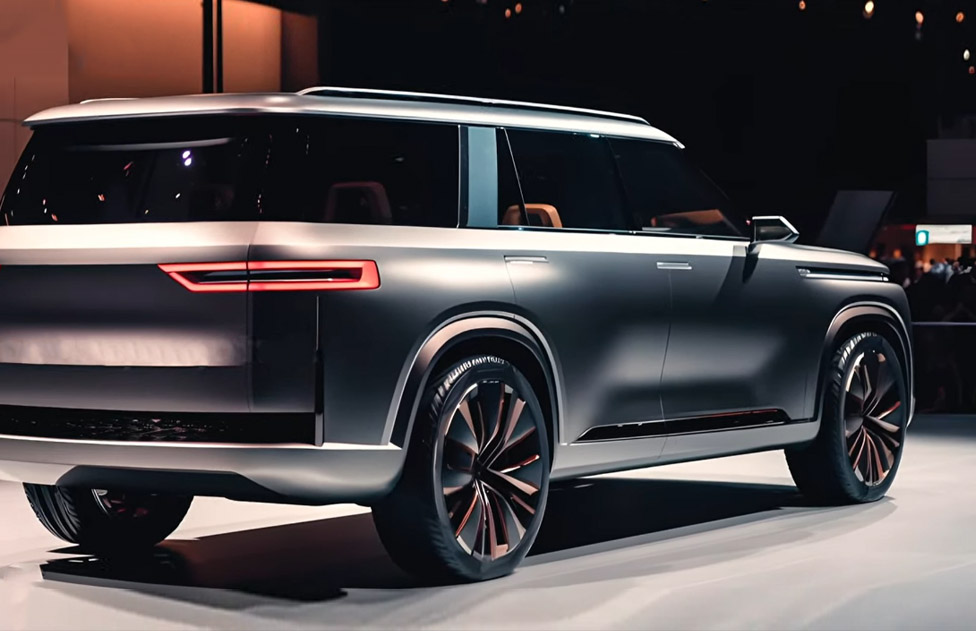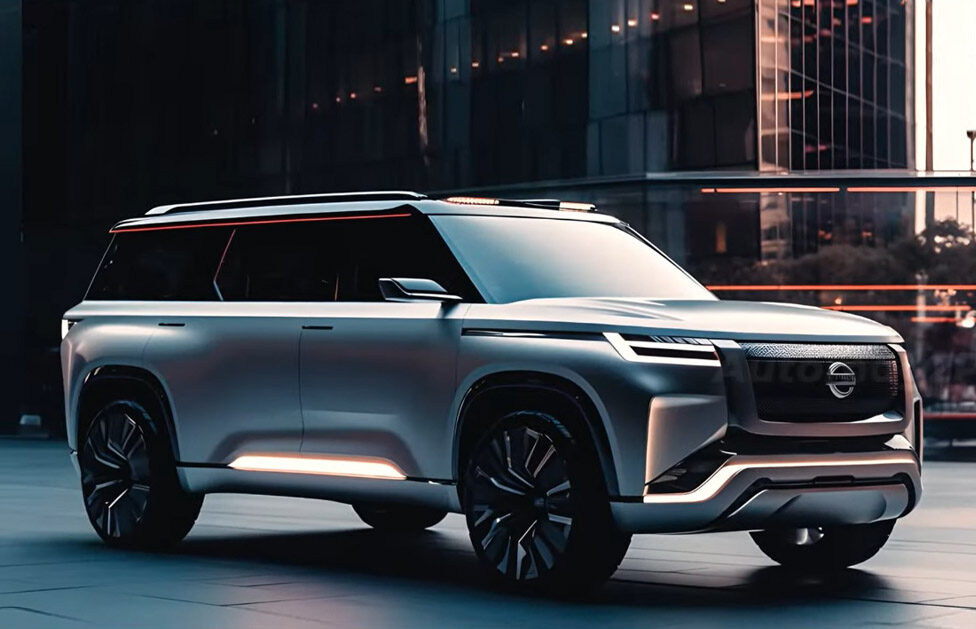The 2025 Armada: Fuel Efficiency In A Full-Sized SUV

The 2025 Armada: Fuel Efficiency in a Full-Sized SUV
The Nissan Armada, a behemoth of an SUV known for its commanding presence and ample passenger space, has traditionally been a vehicle associated with power and capability rather than fuel efficiency. However, with the automotive industry rapidly evolving towards electrification and stricter fuel economy regulations, the 2025 Armada finds itself at a crossroads. This article delves into the potential fuel economy improvements expected in the 2025 Armada, examining the technologies and strategies Nissan might employ to make this iconic SUV more eco-friendly.
A Legacy of Power, a Need for Efficiency:
The Armada, since its inception, has been synonymous with robust V8 engines and a luxurious, spacious interior. Its appeal lies in its ability to comfortably transport a large family or haul heavy cargo, making it a popular choice for families and adventure enthusiasts. However, this dominance in size and power comes at a cost: fuel efficiency. The current generation Armada, powered by a 5.6-liter V8 engine, achieves an EPA-estimated 14 mpg city, 19 mpg highway, and 16 mpg combined. While this figure is not uncommon for full-sized SUVs, the growing emphasis on environmental responsibility and rising fuel prices necessitates a shift towards better fuel economy.
The 2025 Armada: Navigating the Efficiency Maze:
The 2025 Armada faces the challenge of balancing its traditional strengths with the need for improved fuel efficiency. Nissan, recognizing this imperative, is likely to explore a range of strategies to achieve this goal.
1. Hybrid Powertrain:
One of the most prominent pathways towards better fuel economy is the adoption of a hybrid powertrain. This system combines a gasoline engine with an electric motor, allowing for regenerative braking and improved fuel efficiency. Nissan already boasts extensive experience with hybrid technology, evident in its successful Altima and Pathfinder hybrid models. Integrating a hybrid system into the Armada could significantly improve its fuel economy, potentially achieving a 20-25% reduction in fuel consumption.
2. Downsized Engine with Turbocharging:
Another option for the 2025 Armada is the adoption of a smaller, more efficient engine coupled with turbocharging. This approach, popularized by manufacturers like Ford and Volkswagen, offers a blend of power and efficiency. A downsized V6 engine, turbocharged to deliver comparable power output to the current V8, could significantly improve fuel economy while maintaining the Armada’s performance characteristics.
3. Mild Hybrid System:
For a more cost-effective solution, Nissan could implement a mild hybrid system. This system utilizes a smaller electric motor to assist the gasoline engine, primarily during acceleration and deceleration, resulting in modest fuel savings. Mild hybrid systems are already gaining traction in the industry and could offer a viable option for the 2025 Armada.
4. Aerodynamic Improvements:
Even subtle aerodynamic improvements can contribute to fuel efficiency. The 2025 Armada could feature optimized bodywork, including redesigned bumpers, side mirrors, and grille, to reduce drag and improve fuel economy.
5. Weight Reduction:
Reducing the Armada’s overall weight can have a significant impact on fuel efficiency. This could be achieved through the use of lighter materials, such as aluminum or high-strength steel, in the body panels and chassis.
6. Advanced Transmission Technology:
The 2025 Armada could benefit from the adoption of a more advanced transmission, such as a 9 or 10-speed automatic gearbox, allowing for smoother shifting and improved fuel efficiency.
7. Fuel-Saving Features:
Nissan could equip the 2025 Armada with fuel-saving features such as an active grille shutter, which closes at highway speeds to reduce drag, and an engine start-stop system, which automatically shuts off the engine at idle to save fuel.
8. Electrification: A Future Prospect:
While not likely for the 2025 model year, the long-term future of the Armada may involve full electrification. A battery-electric powertrain would offer significant fuel economy benefits, but the challenges of battery range, charging infrastructure, and the high cost of battery technology would need to be addressed before such a transition becomes feasible.
The Impact on Fuel Economy:
The combination of these strategies could result in a significant improvement in the 2025 Armada’s fuel economy. While specific figures are speculative, it’s reasonable to expect a 15-25% improvement over the current model, bringing the Armada’s fuel economy closer to the 20 mpg mark.
The Balancing Act: Performance vs. Efficiency:
The 2025 Armada faces a balancing act between maintaining its powerful performance and achieving better fuel efficiency. While the focus on fuel economy is undeniable, Nissan will likely prioritize retaining the Armada’s core strengths, ensuring that its driving experience remains enjoyable and capable.
Beyond Fuel Economy:
The 2025 Armada’s focus on fuel efficiency extends beyond simply reducing fuel consumption. It signifies a shift towards a more environmentally conscious approach to automotive design. By embracing hybrid technology and implementing other fuel-saving measures, Nissan demonstrates its commitment to sustainability and its understanding of the changing consumer landscape.
The Future of the Armada:
The 2025 Armada represents a turning point for this iconic SUV. By incorporating innovative technologies and embracing fuel-saving strategies, Nissan aims to retain the Armada’s popularity while adapting to the evolving automotive landscape. This move towards greater fuel efficiency, coupled with the brand’s commitment to innovation, suggests a bright future for the Armada, one where power and capability coexist harmoniously with environmental responsibility.
Conclusion:
The 2025 Armada is poised to break new ground in fuel economy for full-sized SUVs. Nissan’s commitment to hybrid technology, downsized engines, and other fuel-saving features will likely result in a significant improvement in fuel efficiency without compromising the Armada’s core strengths. This shift towards a more eco-conscious approach reflects the evolving automotive landscape and highlights Nissan’s dedication to sustainability. As the 2025 Armada takes its place on the road, it will be a testament to the industry’s progress in balancing power and efficiency, setting a new standard for the future of full-sized SUVs.







